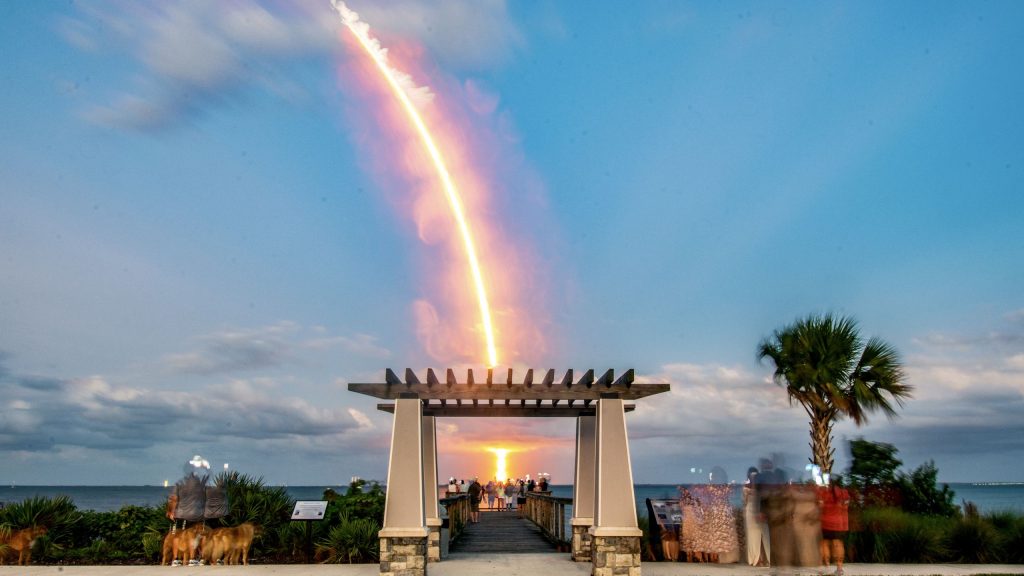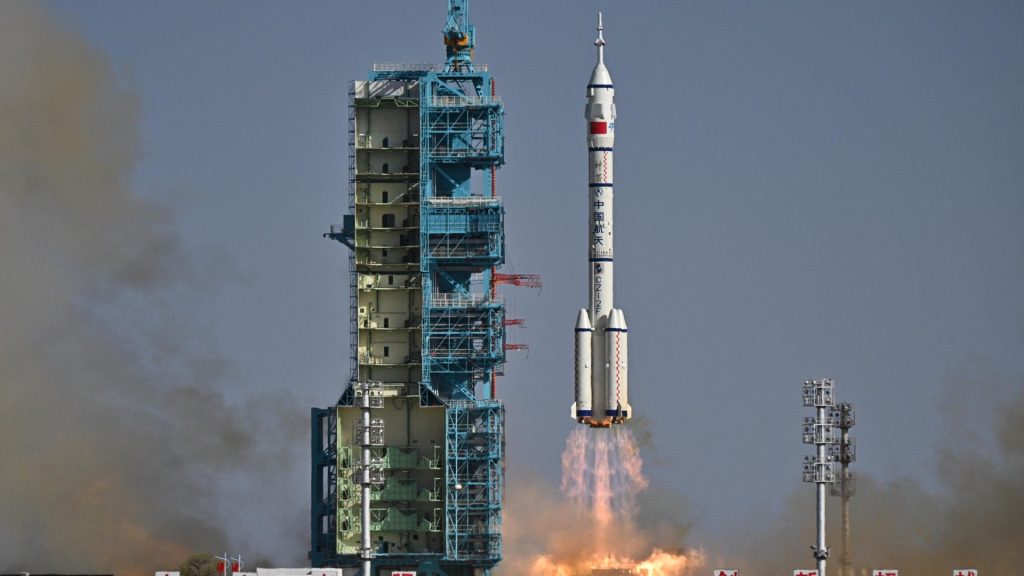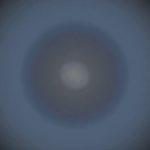Simulations indicate that planets in the habitable zone of red dwarfs are unlikely to have exomoons.


Habitable zone planets around red dwarfs aren’t likely to host exomoons, simulations suggest (Image Credit: Phys.org)
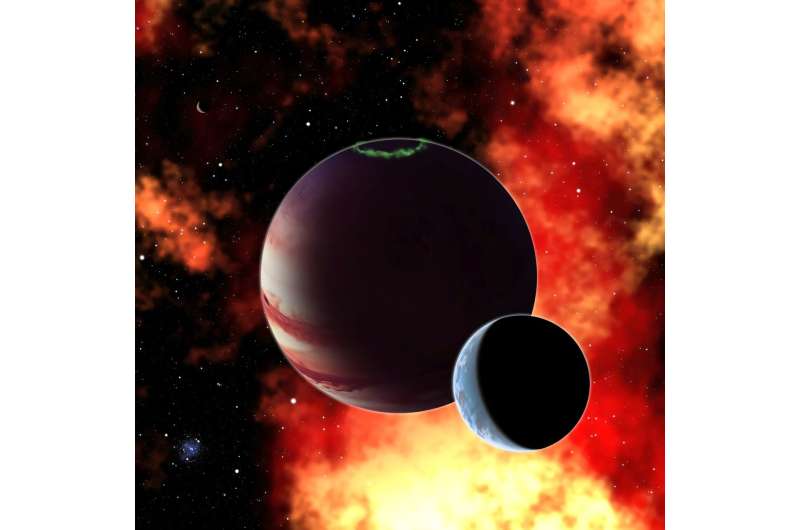
There are no confirmed exomoons, moons orbiting distant exoplanets in other solar systems. There are a few candidates, but none have passed the threshold and been accepted as confirmed. But they must exist. Moons are common in our solar system, so it would be extremely weird if they didn’t exist elsewhere.
Among the moons in our solar system, Earth’s moon is special.
It’s very large relative to Earth, and its presence has helped Earth remain habitable. It stabilizes our planet’s axial tilt, which helps create a climate and seasons more amenable to life. It also generates the oceans’ tides, which helps coastal regions be the biodiverse and rich regions they are.
Do other terrestrial planets in habitable zones host exomoons? Could they also help generate the conditions for life? That’s the focus of new research.
It’s titled “Tidally Torn: Why the Most Common Stars May Lack Large, Habitable-Zone Moons.” It will be published in The Astronomical Journal and the lead author is Shaan Patel from the Department of Physics at the University of Texas at Arlington. The research is available on the arXiv preprint server.
M-dwarfs (red dwarfs) are the most common type of star in the Milky Way, and are known to host rocky exoplanets in their habitable zones. But red dwarfs are small and dim, and their habitable zones are closer than other, brighter stars like our sun. Among other things, that means that these planets are likely tidally-locked.
“In recent years, the investigation of exomoons orbiting HZ planets and specifically within M-dwarf systems has garnered increasing attention, making it crucial to examine the conditions necessary for exomoons to exist in such systems,” the researchers write.
The fact that astronomers have been granted JWST observing time to search for an exomoon around the rocky exoplanet TOI-700d confirms this. That planet is suspected of hosting a luna-like moon.
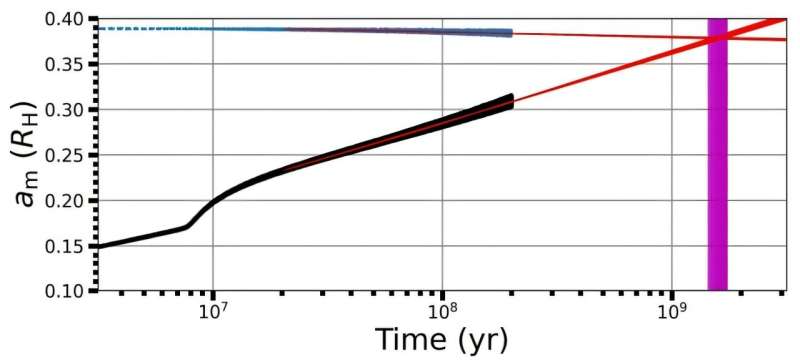
The researchers used N-body simulations to understand how rocky planets with moons fare in these conditions.
“Earth-like planets in the habitable zone (HZ) of M-dwarfs have recently been targeted in the search for exomoons,” the authors write. “We study the stability and lifetime of large (Luna-like) moons, accounting for the effects of 3-body interactions and tidal forces…” they explain.
In their simulations they varied the host planet’s mass and semi-major axis. They wanted to determine when exomoons become unstable. Their instability is connected to the host planet’s Hill sphere. The Hill sphere describes the host planet’s gravitational hold on the moon, and the researchers found that the larger the Hill sphere is, the more time it takes for a moon to escape, which makes intuitive sense.
The results show how unlikely exomoons are in these types of systems.
“Our findings suggest that HZ Earth-like planets in M-dwarf systems will lose large (Luna-like) moon(s) (if formed) within the first billion years of their existence,” the researchers explain.
The type of M-dwarf affects the outcome, and there are 10 classifications from M0 to M9. The classifications reflect a star’s temperature, which in turn affects the location of the HZ. And that in turn affects the strength of the stellar tides and their power over exomoons.
“Our 200 Myr numerical simulations of star–planet–moon systems orbiting the HZ of M4-dwarfs show the typical moon lifetime is less than 10 Myr, which is very short compared to the astrobiological, geological, or astrophysical timescales,” the authors write. Based on that, the researchers say they expect that similar systems in the HZs around M5 to M9 stars will lose their moons even sooner than that.
Previous research shows that massive exomoons probably experience extreme tidal heating, and that would make them uninhabitable. “Together with our findings, this points to a general fragility of exomoons in M-dwarf systems,” the authors explain.
Despite the general precariousness of these arrangements, there are some cases where a large moon could survive for a long time. “A large moon’s lifetime can reach 1 Gyr if it orbits a habitable Earth-mass planet orbiting an M0-dwarf,” the researchers write. But that’s a special configuration where the HZ extends further.
This “weakens the stellar tide on the host planet and leaves a large part of the tidal action to the moon’s tide that despins the host planet,” they explain. In this case, and if the host planet had two Earth masses, the moon could last for a maximum of 1.35 billion years. For context, this corresponds to when oxygen was just beginning to build up in Earth’s atmosphere.
The authors acknowledge that in very rare cases, an exomoon could persist for longer than 5 billion years. They also point out that much smaller moons the size of Ceres or Phobos could survive for a long time, but they’re beyond our ability to detect.
The detection of exomoons could get a boost when and if the Habitable Worlds Observatory is built. Its primary task would be to find habitable Earth-like exoplanets. But its 6 to 8 meter mirror would also allow it to detect exomoons, at least in some cases.
The Giant Magellan Telescope could also be a game changer. It should begin observations in the 2030s and will have a 24.5 meter composite mirror. It will be able to directly image exoplanets and may be able to detect exomoons.
This study focused on M dwarfs because they’re the most common type of star and host many rocky worlds. But there are other types of stars out there, where the HZ is much further from the star. It may be possible for some of those HZ planets to host exomoons for billions of years.
Those moons may help make their planets habitable like Luna does for Earth. Or some of the moons may be habitable. We’re still waiting to see if some of our solar system’s icy ocean moons are habitable. We can’t rule it out for other solar systems.
More information:
Shaan D. Patel et al, Tidally Torn: Why the Most Common Stars May Lack Large, Habitable-Zone Moons, arXiv (2025). DOI: 10.48550/arxiv.2511.03625
Provided by
Universe Today
Habitable zone planets around red dwarfs aren’t likely to host exomoons, simulations suggest (2025, November 10)
retrieved 10 November 2025
from https://phys.org/news/2025-11-habitable-zone-planets-red-dwarfs.html
part may be reproduced without the written permission. The content is provided for information purposes only.




